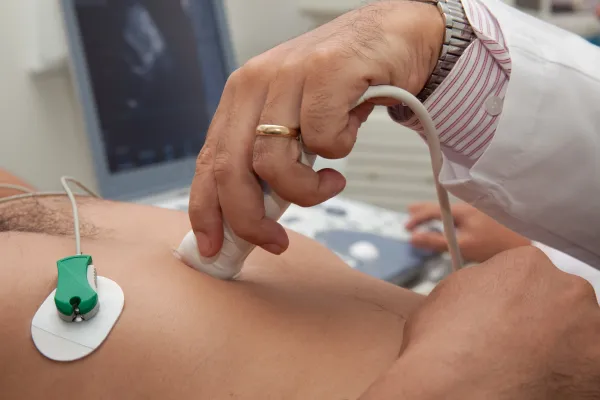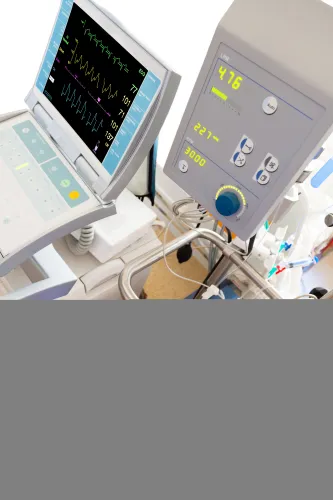Cardiology Coding Alert
Reporting TEE Services During Transcatheter Intracardiac Therapies? Here's How
Hint: Know which services are already included within 93355.
In Cardiology Coding Alert Vol. 21 No. 7, you saw how important it is to know whether the cardiologist performed a transesophageal echocardiogram (TEE) for non-congenital (acquired) abnormalities or congenital abnormalities. But to successfully report TEEs in your practice, you need to keep a special code in your back pocket, and that’s 93355. You’ll need to apply it for TEE services during transcatheter intracardiac therapies.
Read on to learn more about 93355 to protect your TEE reimbursement.
Take a Look at These Transcatheter Examples
When you take look at the first half of the descriptor for 93355, you will see that it lists a variety of procedures — (Echocardiography, transesophageal (TEE) for guidance of a transcatheter intracardiac or great vessel(s) structural intervention(s) (eg, TAVR, transcatheter pulmonary valve replacement, mitral valve repair, paravalvular regurgitation repair, left atrial appendage occlusion/closure, ventricular septal defect closure) (peri-and intra-procedural) …).
Coding tip: To simplify this descriptor a bit more, you’ll report 93355 for a provider who uses TEE to help visualize the heart or great vessels during a transcatheter structural intervention on those structures.
Don’t miss: The ventricular septal defect closure example includes both “peri- and intra -procedural.” The prefix “peri-” means about or near, and “intra-” means within. So, 93355 represents TEE services performed immediately before, during, and immediately after the related surgical procedure.
CPT® guidelines: You can only report 93355 “once per intervention and only by an individual who is not performing the interventional procedures,” according to CPT® guidelines.
93355 Includes These Services, So Don’t Report Separately
By looking at the second half of the descriptor for 93355, you will see you should not report the following specific services separately from 93355 because they are already considered an inherent part of the code— (… real-time image acquisition and documentation, guidance with quantitative measurements, probe manipulation, interpretation, and report, including diagnostic transesophageal echocardiography and, when performed, administration of ultrasound contrast, Doppler, color flow, and 3D):
- Real-time image acquisition, documentation, quantitative measurement, interpretation, and report: According to CPT® guidelines for echocardiography: “Report of an echocardiographic study, whether complete or limited, includes an interpretation of all obtained information, documentation of all clinically relevant findings including quantitative measurements obtained, plus a description of any recognized abnormalities. Pertinent images, videotape, and/or digital data are archived for permanent storage and are available for subsequent review.” Don’t miss: When reporting 93355, as with all TEE services, you must make sure the documentation is clear as to which provider performed what service and why, says Rebecca Sanzone, CPC, CPMA, compliance administrator at St. Vincent Medical Group/Ascension Health in Indianapolis, Indiana.
- Probe manipulation: Code 93355 includes probe manipulation, so you’ll report 93355 only once regardless of the number of times the provider moves the probe to get different views. Don’t miss: According CPT®, you can report the placement of a TEE probe by a separate physician with 93313 (Echocardiography, transesophageal, real-time with image documentation (2D) (with or without M-mode recording); placement of transesophageal probe only). However, the same person may not report 93313 in conjunction with 93355.
- Diagnostic TEE: Per its code descriptor, 93355 includes diagnostic TEE. This clarification will help you remember not to report a diagnostic TEE separately.
- Spectral and color-flow Dopplers: Code 93355 also includes any spectral dopplers and color-flow dopplers cardiologist performed, so these should not be reported separately, says Ray Cathey, PA, FAAPA, MHS, MHA, CCS-P, CMSCS, CHCI, CHCC, president of Medical Management Dimensions in Stockton, California. Don’t miss: You see this rule come into play when you see that CPT® gives you a list of codes you should not report in conjunction with 93355. The following Doppler codes are part of this list:
o +93320 (Doppler echocardiography, pulsed wave and/or continuous wave with spectral display (List separately in addition to codes for echocardiographic imaging); complete)
o +93321 (Doppler echocardiography, pulsed wave and/or continuous wave with spectral display (List separately in addition to codes for echocardiographic imaging); follow-up or limited study (List separately in addition to codes for echocardiographic imaging)
o +93325 (Doppler echocardiography color flow velocity mapping (List separately in addition to codes for echocardiography).
Related Articles
Cardiology Coding Alert
- TEE:
Reporting TEE Services During Transcatheter Intracardiac Therapies? Here's How
Hint: Know which services are already included within 93355. In Cardiology Coding Alert Vol. 21 [...] - ICD-10:
You'll Find New Cerebral Infarction, Cerebrovascular Disease Codes on Oct. 1
Hint: Don’t miss new codes I63.81 and I63.89. CMS recently published its list of new [...] - Case Study:
Tackle This Tricky 93355 Case Study for TEE Coding Success
See how our coding expert answers this challenging subscriber question. As you can see from [...] - Coding Quiz:
Test Your Prolonged Services Smarts With These 3 Questions
Hint: The importance of time is vital when reporting prolonged services. Do you know your [...] - You Be the Coder:
Tackle Challenging Doppler Echo Conundrum
Question: Can we automatically report +93320 and +93325 in conjunction with 93312? Alabama Subscriber Answer: [...] - Reader Question:
Look to Dx I21.A9 for MI Type 3
Question: Which ICD-10 code should I report for myocardial infarction type 3? I don’t see [...] - Reader Question:
Make Sure You Understand CCI Modifier Indicators
Question: What does a modifier indicator of 1 mean regarding the CCI edits? California Subscriber [...]




